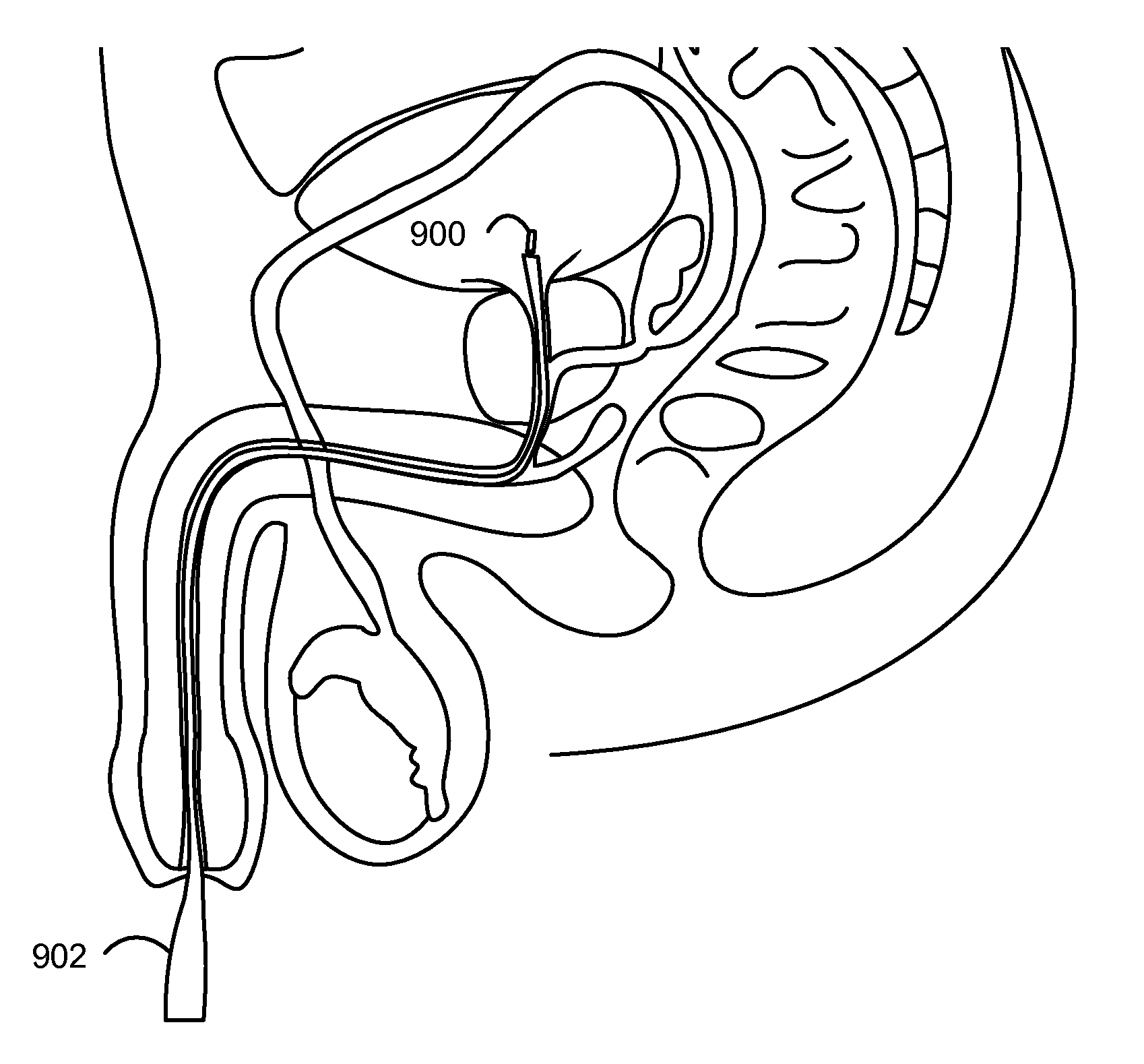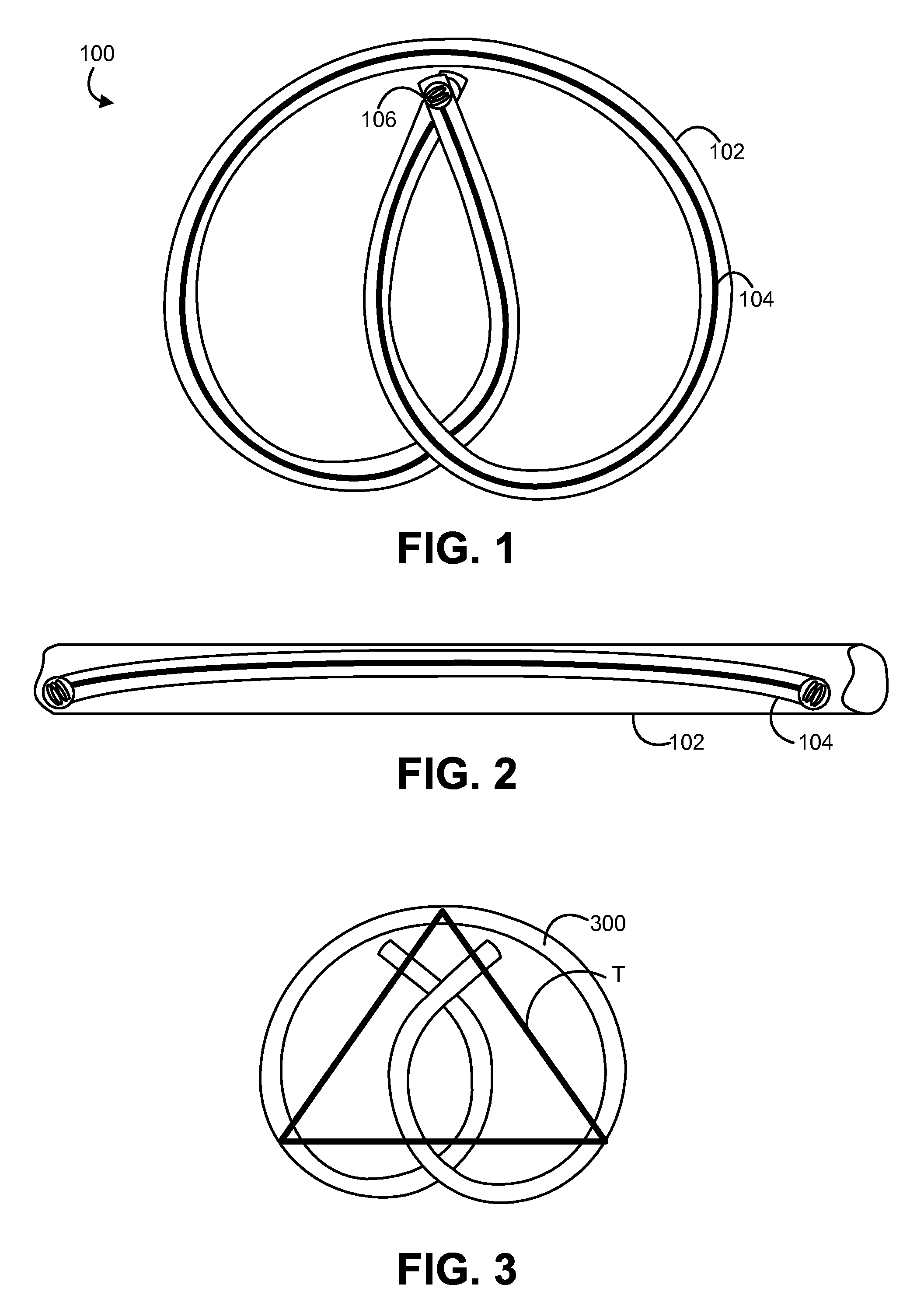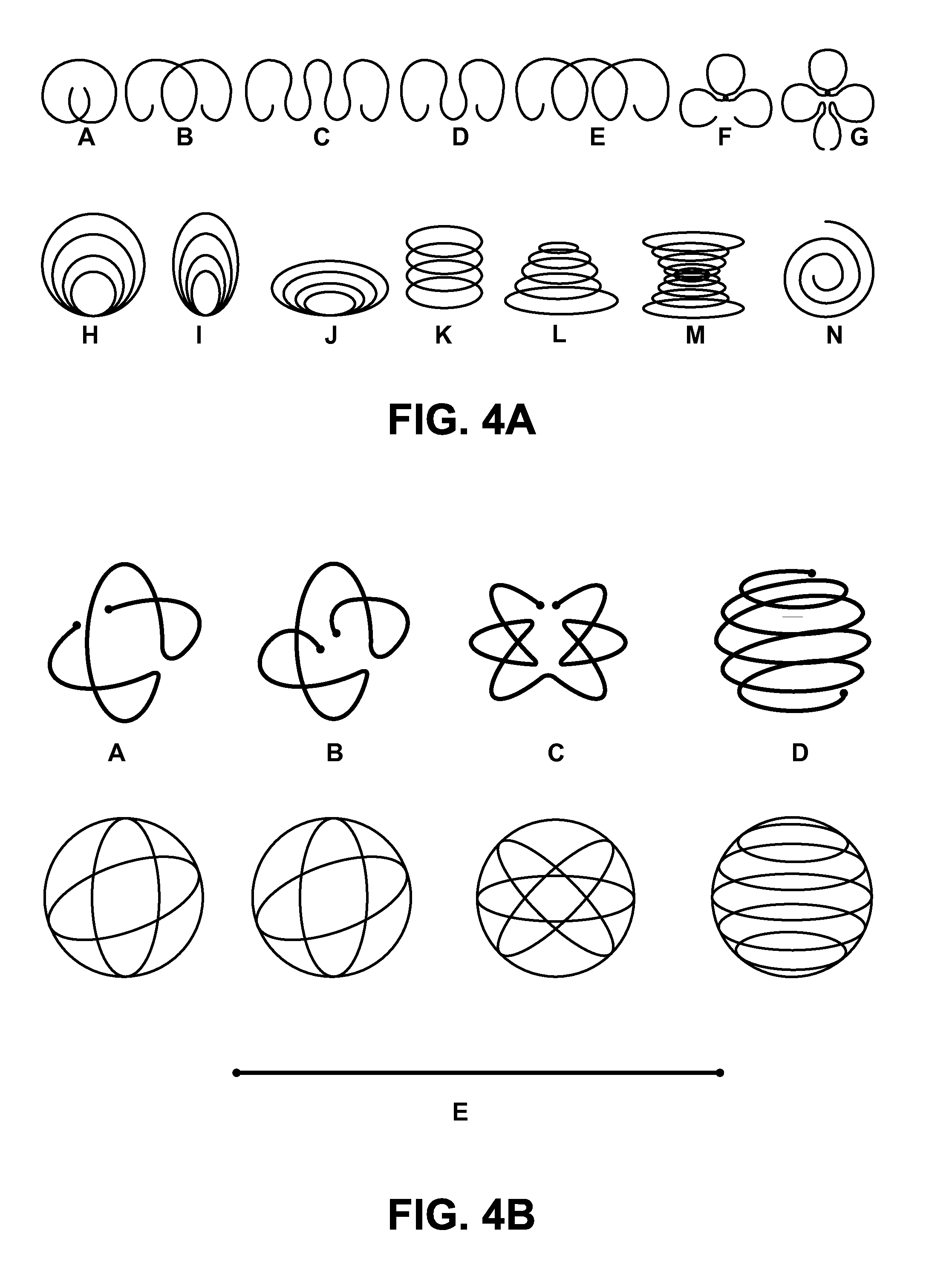Minimally Invasive Systems and Methods for In Vivo Testing of Materials
a technology of in vivo testing and minimal invasive systems, applied in chemical methods analysis, biomass after-treatment, instruments, etc., can solve problems such as disruption of study, difficulty in retaining material, and trauma to the animal
- Summary
- Abstract
- Description
- Claims
- Application Information
AI Technical Summary
Benefits of technology
Problems solved by technology
Method used
Image
Examples
example 1
Sample Spring Constants for Certain Low Modulus Wires
[0078]A nitinol wire having a Young's modulus of about 30 GPa, a diameter of about 0.2286 mm, an arc radius of about 1.5 cm, and one coil may have a spring constant of about 3.7 N / m. A polyurethane wire having a Young's modulus of about 25 MPa, a diameter of about 1 mm, an arc radius of about 1 cm, and one coil may have a spring constant of about 3.8 N / m. A silicone wire having a Young's modulus of about 2.41 MPa, a diameter of about 1.2 mm, an arc radius of about 0.75 cm, and two coils may have a spring constant of about 3.6 N / m. A poly(glycerol-sebacate) (PGS) wire having a Young's modulus of about 1.7 MPa, a diameter of about 1.2 mm, an arc radius of about 0.76 cm, and three coils may have a spring constant of about 3.7 N / m.
PUM
| Property | Measurement | Unit |
|---|---|---|
| diameter | aaaaa | aaaaa |
| diameter | aaaaa | aaaaa |
| size | aaaaa | aaaaa |
Abstract
Description
Claims
Application Information
 Login to View More
Login to View More - R&D
- Intellectual Property
- Life Sciences
- Materials
- Tech Scout
- Unparalleled Data Quality
- Higher Quality Content
- 60% Fewer Hallucinations
Browse by: Latest US Patents, China's latest patents, Technical Efficacy Thesaurus, Application Domain, Technology Topic, Popular Technical Reports.
© 2025 PatSnap. All rights reserved.Legal|Privacy policy|Modern Slavery Act Transparency Statement|Sitemap|About US| Contact US: help@patsnap.com



